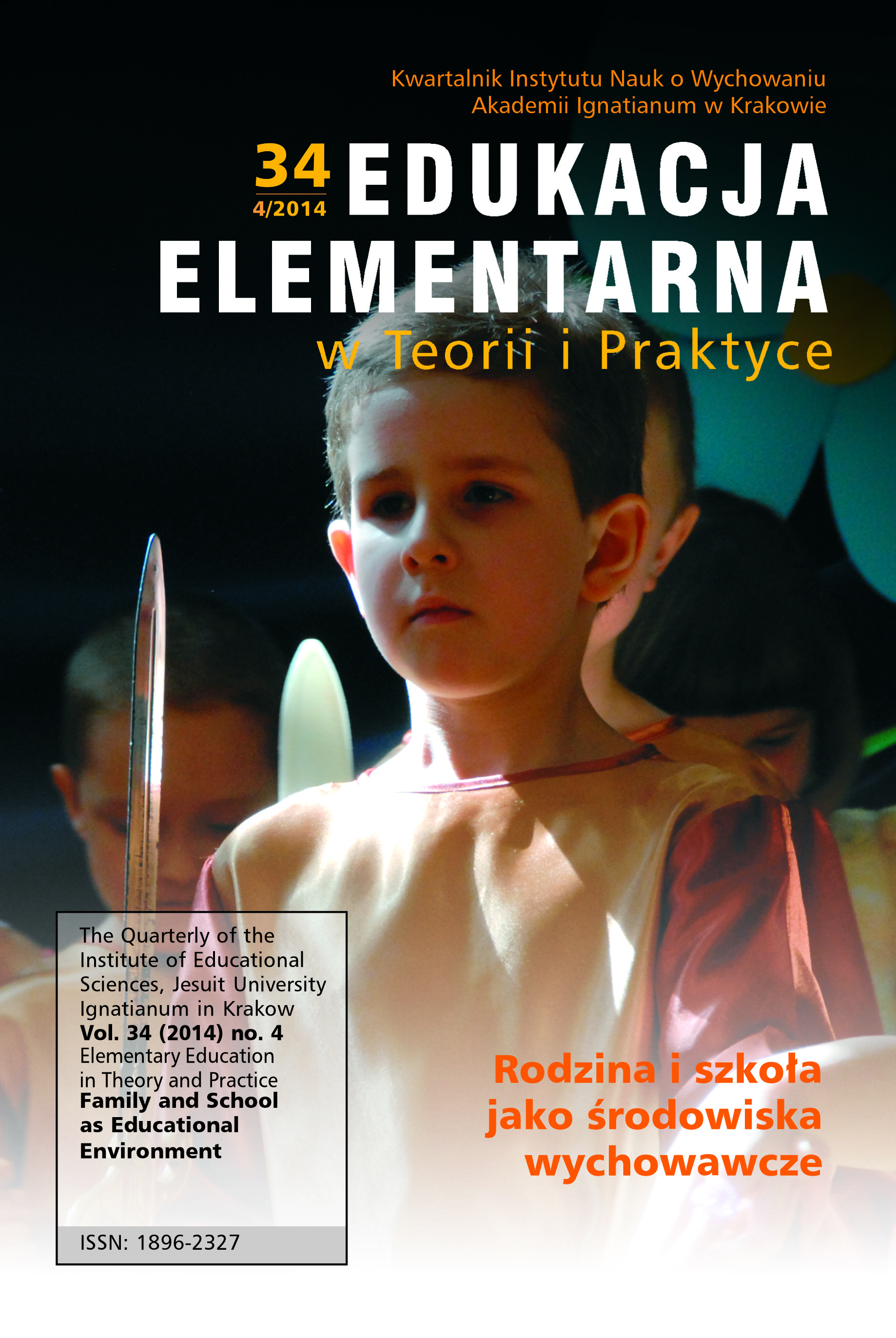Rozwój agresji u dzieci i oddziaływania profilaktyczne w rodzinie
The Development of Aggression in Children and the Impact of Prevention in the Family
Author(s): Krzysztof BielSubject(s): Social Sciences, Education
Published by: Uniwersytet Ignatianum w Krakowie
Keywords: aggression; physical aggression; social aggression; familial predictors of aggression; prevention; protective familial factors
Summary/Abstract: Aggressive children and young people pose a threat to the proper functioning of society. Contemporary knowledge about aggression in children indicates the development of aggressive behaviour from the earliest period of life, together with its stability and heterogeneous nature. This article aims to present the early development of aggression in children, indicating familial factors lying behind aggressive juvenile behavior and providing guidance for the effective prevention of such behavior in a family environment. The development of aggression in children ranges from physical aggression to relational forms of aggressive behaviour. The presence of physical symptoms of aggression is more relevant to boys, while social (relational) aggression is more common in girls. Research on aggression indicates that there is a group of children who show increased levels of aggression. In many cases this leads to social maladjustment. The author suggests three groups of factors responsible for generating aggression on the part of children in the family: intergenerational transmission, methods and styles of upbringing and the presence of marital conflict. Then he offers some tips for prevention within the family, taking into account the different phases of a child’s development and the most important protective factors. In order to be effective, this prevention should consider the forms of aggression used by children and match them with adequate programs aimed at dealing with anger (where the latter is construed as the reason for reactive aggression), or at addressing any perceived benefits and positive emotions associated with aggression when the latter is construed instrumentally (as proactive aggression). In addition, preventive measures should be targeted at both the child and the parents, and at the wider social environment potentially capable of providing the support that will be needed by a dysfunctional family environment.
Journal: Edukacja Elementarna w Teorii i Praktyce
- Issue Year: 9/2014
- Issue No: 4 (34)
- Page Range: 71-88
- Page Count: 18
- Language: Polish

